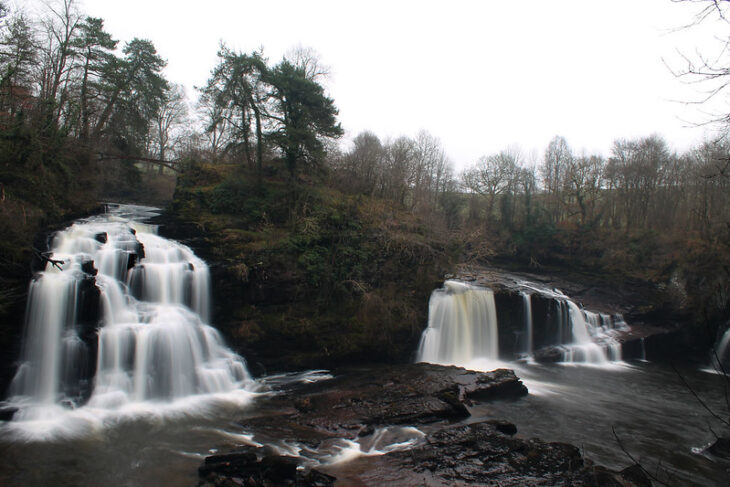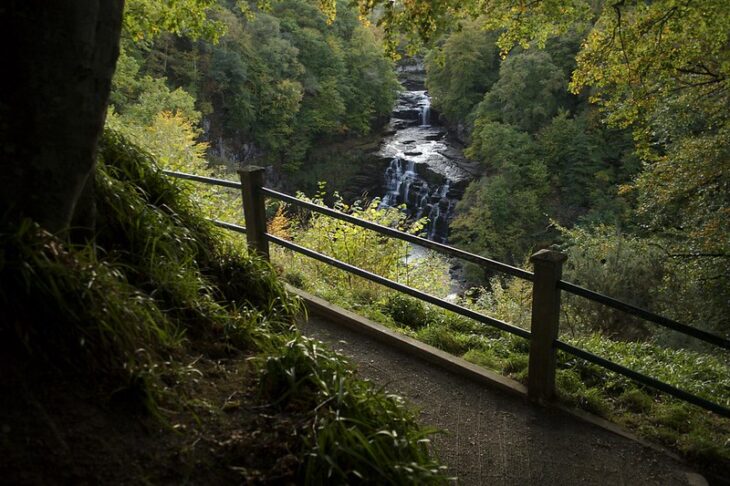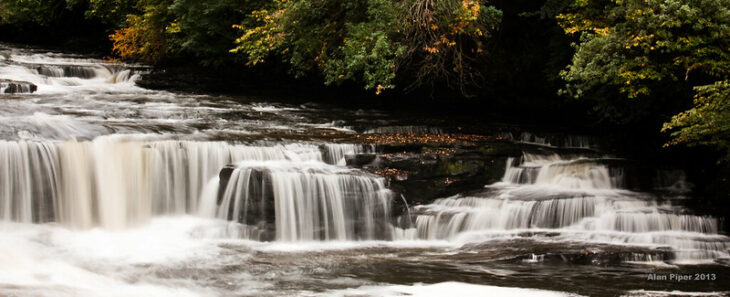Five things to know when visiting the Falls of Clyde
As spring arrives, many of us will be getting out into the countryside. Keep in mind a few things to make sure you enjoy the Falls of Clyde safely.
One of the things a lot of people learned during the lockdowns of the past year was that there are some beautiful places to explore right on our doorsteps. It has been great to see new visitors discovering the peaceful woodlands and dramatic views at the Falls of Clyde. However, the countryside can present dangers to those exploring it for the first time, and tragedies have occurred over the years. Here are some important things to be aware of when visiting the reserve:

The views are special but the drops are steep. It can be tempting to try and get as good a view as possible of the gorge by going close to the edge. This is a bad idea. Loose stones and unstable vegetation make the cliff edge very dangerous. The path has been designed to offer you the best views of the landscape while also keeping you safe – stick to it!
Just because a section doesn’t have safety rails, it doesn’t mean it is safe. Being a nature reserve, we try to strike a balance between maintaining necessary infrastructure and retaining the special wild character of the gorge. For this reason, the cliffs are not fenced off along the whole trail, but you should treat them as if they are. See above: sticking to the path will keep you safe.

Do not go into the gorge or enter the water at any point. Anyone who has seen the Clyde rushing through the reserve in full spate will appreciate its immense, fearsome power. It’s a mesmerising sight. Even when the levels are lower and the flow is slower however, appearances can be deceptive. This section of the river is home to strong, irregular currents and deep pools, carved out over millennia. The rocks are slippery and sharp, especially near to the falls. The consequences of falling in are serious and real.
The water level can change quickly due to the hydroelectric power station. This is the other reason you must not enter the gorge. Ordinarily, the hydro scheme diverts large quantities of water out of the river and through the giant green pipes you pass on your way to Corra Linn. However, when that is switched off, the water goes back into the main river, causing the water level to rise quickly and significantly. Do not risk getting caught up in this.
Bring sturdy footwear, especially when it’s wet out. We get our fair share of rain at the Falls of Clyde and this can make some sections of the footpath quite treacherous. The boardwalk in particular can get very slippery after rain, while other sections of the track can become quite muddy. Nothing wrong with mud, but it helps to be prepared!
Spring is a really special time to visit the reserve – wildflowers are starting to emerge, the woods are full of birdsong and the trees will soon be luminous with fresh green leaves. Keep in mind the points above and you’ll help make sure your visit is an enjoyable one.

Patrick Endall, Falls of Clyde Seasonal Ranger
Help protect Scotland’s wildlife
Our work to save Scotland’s wildlife is made possible thanks to the generosity of our members and supporters.
Join today from just £3 a month to help protect the species you love.
Preface
As spring arrives, many of us will be getting out into the countryside. Keep in mind a few things to make sure you enjoy the Falls of Clyde safely. One …
